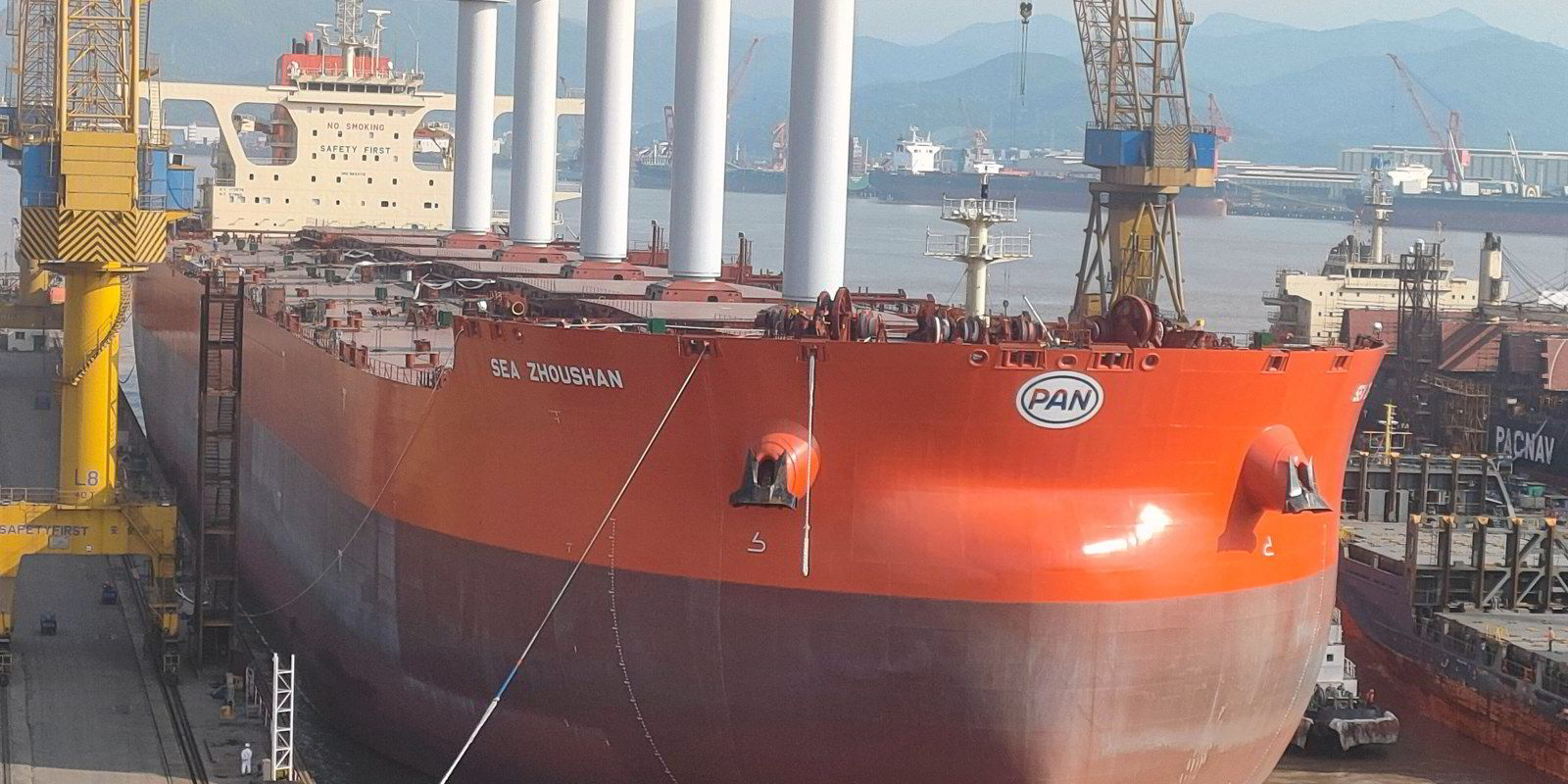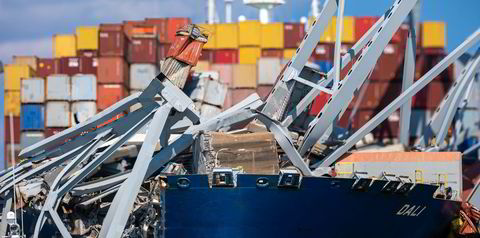A design for an LNG-fuelled, 2,500-teu boxship with integrated but partially retractable sails has received approval in principle from French classification society Bureau Veritas (BV).
The Trade Wings 2,500 containership was designed jointly by VPLP Design, Alwena Shipping, Shanghai Merchant Ship Design & Research Institute (SDARI) and AYRO. It has six Oceanwings sails installed on a vertical sliding mechanism.
The 197-metre-long vessel is equipped with an LNG-electric propulsion system with pods for manoeuvring, and the sails are used to minimise the 32,500-dwt vessel’s fuel consumption.
The Oceanwings can be partially retracted while in port to minimise the impact on cargo operations.
The vessel's power plant is designed with pure gas four-stroke generation sets that the designers said provide a flexible platform for possible upgrade to lower carbon fuels, such as ammonia or hydrogen, in the future.
The hatchless, 32-metre-wide vessel is said to be suitable for shortsea or feeder operations in Europe, Central America, the Caribbean Islands and China.
However, the designers said it could also operate on transatlantic trades where on a typical 4,000 nautical mile (7,408 km) route it is claimed the Trade Wings 2,500 vessel could save an average 35% of CO2-equivalent emissions compared with a conventional design with a two-stroke engine.
The sails would account for 57% of the savings with the LNG-fuelled engine delivering the remaining 43%.
SDARI is part of yard group China State Shipbuilding Co and is one of China’s largest merchant ship design institutes. French company AYRO designs, manufactures and sells the Oceanwings sails.
VPLP Design is a French naval architecture firm with a record in mono and multihull sailing yachts, while Marseilles-based Alwena Shipping is a consulting company working in project management for vessel retrofits, newbuilds and energy efficiency optimisation.
“Wind-assisted propulsion is a high-potential solution that can contribute to the long-term decarbonisation of the marine industry,” said Alex Gregg-Smith, BV's senior vice president for North Asia.
BV has just released new wind propulsion system rules and the design demonstrated the feasibility of the method for containerships with deck space limitations, he added.
“The design provides both operational flexibility, improved efficiency and reduced carbon emissions, complying with, or exceeding, regulatory requirements,” Gregg-Smith said.







